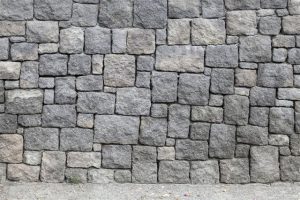Ashlar with Best Price

What is Ashlar?
Stone is one of the most widely used and used building materials from the past to the present.
In the past people used stones to build houses and the material was more important than metal.
Nowadays, with the advancement of science and technology of stone extraction, it has become easier and more widely used in the construction industry as well as in stone building.
Stones have unique capabilities that are not comparable to other building materials.
They include high durability and high resistance, optimum polishing, high abrasion and
abrasion resistance, shear and polishability, washability, color fastness, heat and
humidity resistance, good tensile and flexural strength, non-abrasion resistance It is mentioned as permeability, resistance to climate change, high hardness and
compressive strength, stability against acidic and alkaline materials, etc.
The stone is used to cover the interior wall of the building, facade, road construction, wall and foundation, street floor and sidewalk and various decorations.
The materials are made of rocks and their application is different, each having its own characteristics with regard to the properties of the stone.
Stones are widely used in construction because of their resistance to various factors.
Nowadays, due to the ease of stone extraction operations, its use is expanding and is being used in various building locations. Examples of stones used in the construction industry include:
Floors of buildings and stairs
The stone used for stairs and flooring will be subject to abrasion and impact, so it must be very hard and have high abrasion and impact resistance.
The floor stone of the building should be cut in one direction, such as sedimentary and metamorphic rocks that have the advantage.
In addition, because of exposure to contamination, stone and stairs should have low porosity so that they are not impermeable to damage by washing with detergent and pouring on acidic substances or playing on it.
Quartzite and gneiss are among the rocks suitable for floor and stairs.
Interior wall covering
The use of stone for the interior wall of the building gives it a very cool and glamorous appearance.
Basically stone is used to cover bathrooms and sanitary walls, office buildings, shops, dining halls and more.
The stone used for the wall should have a beautiful, rough surface.
In addition, its porosity is low so as not to damage the detergent by washing and to reduce its resistance.
Building facade
Wall and foundation
The rocks used for the retaining walls are arranged irregularly without any special shape.
The rocks used in the area are used to save construction costs.
Smaller pieces can also be used to fill the gap between rocks.
Porous and layered rocks with high solubility are not suitable for walls and foundations.
But hard rocks with high compressive strength and specific gravity are suitable.
Most dolomitic sandstones and limestones are a good choice for walls and foundations.
Roof Cover
Although stone is not used today to cover the roof of the building, in some areas these can be seen.
Roofing stones should be lightweight, porous, impermeable and with high flexural strength.
In addition, it can be divided into thin, flat layers. Chlorite schists and mica schists are suitable rocks for roofing.
Decorate the building
Stones of a good color and appearance, in addition to their high durability, have good flexural and tensile strength for interior decoration.
These stones are used to decorate the fireplace wall, columns, door and window frames, etc. Stones can be used for this purpose.
Types of building stone
Granite
Granite is a type of igneous rock that due to its high density and hardness are considered durable materials.
Granite is expensive because it is costly to extract, cut and polish.
Granite is used for infrastructure, flooring, painting and interior decoration.
It is impermeable rock and highly resistant to impact and water penetration.
The surface of the granite can be polished and its appeal to the building.
Limestone
Quartzite rock
Marble
Marble
Marble is a sedimentary limestone that has been altered to some extent.
This stone is classified into three categories:
Chinese stone, crystal stone and cloud stone.
Chinese stone has fine and crystalline texture and is divided into three types:
white Chinese, crystal Chinese and gray Chinese.
In contrast, crystalline rock has a coarse-grained, crystalline texture and occurs in areas with high metamorphism.
Clouds, a kind of marble, also have a cloudy state, actually composed of non-parasitic strips of light and dark minerals.
Marble has no resemblance to marble.
This rock is highly resistant to various atmospheric factors and has high compressive and tensile strength. It is lighter than other rocks but has high stability.
Marble does not absorb water but has little resistance to weathering and acid rain.
This low resistance has made it work only inside the building.
Marble types include Khoy marble, White Mountain, Dehbid, Harsin, Shiraz, Kavir Desert and Kerman Kav.
Travertine
Sandstone
Gabbro stone

